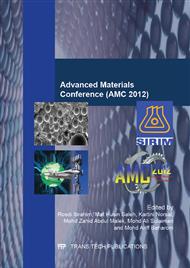p.32
p.38
p.43
p.51
p.58
p.63
p.73
p.79
p.85
Benzene and Cyclohexane Separation Using 1-Propanenitrile-3-butylimidazolium Dicyanamide Ionic Liquid
Abstract:
Cyclohexane is mainly produced by catalytic hydrogenation of benzene, and the separation of unreacted benzene is very important process. However, the separation of benzene and cyclohexane mixture is one of the difficult separation processes in petrochemical industry. Presently, extractive distillation is commercially used to separate benzene and cyclohexane using molecular solvents. However, the current process suffers from process complexity and high-energy consumption. In this work, new ionic liquid, 1-propanenitrile-3-butylimidazolium dicyanamide was synthesized and applied for separation benzene and cyclohexane mixture. Some of the thermophysical properties of the ionic liquid were measured. The vapour- liquid equilibrium and relative volatility of the components were determined. The ionic liquid breaks the azeotropic mixture and increased the relative volatility of cyclohexane to benzene.
Info:
Periodical:
Pages:
58-62
Citation:
Online since:
January 2014
Keywords:
Price:
Сopyright:
© 2014 Trans Tech Publications Ltd. All Rights Reserved
Share:
Citation:


